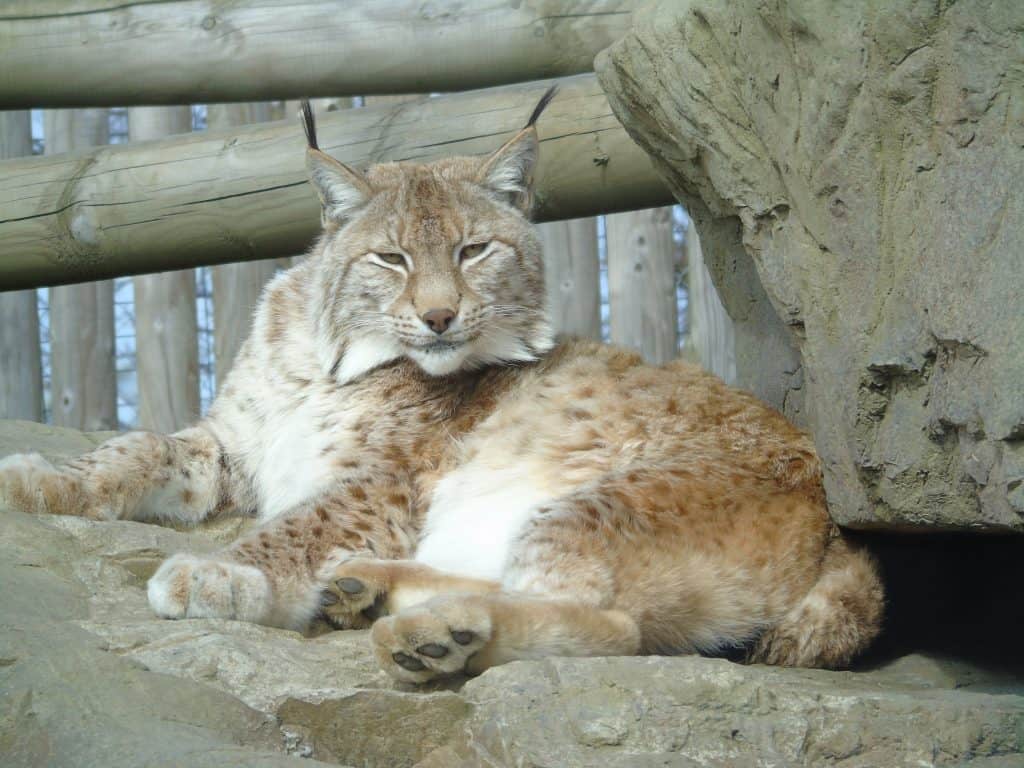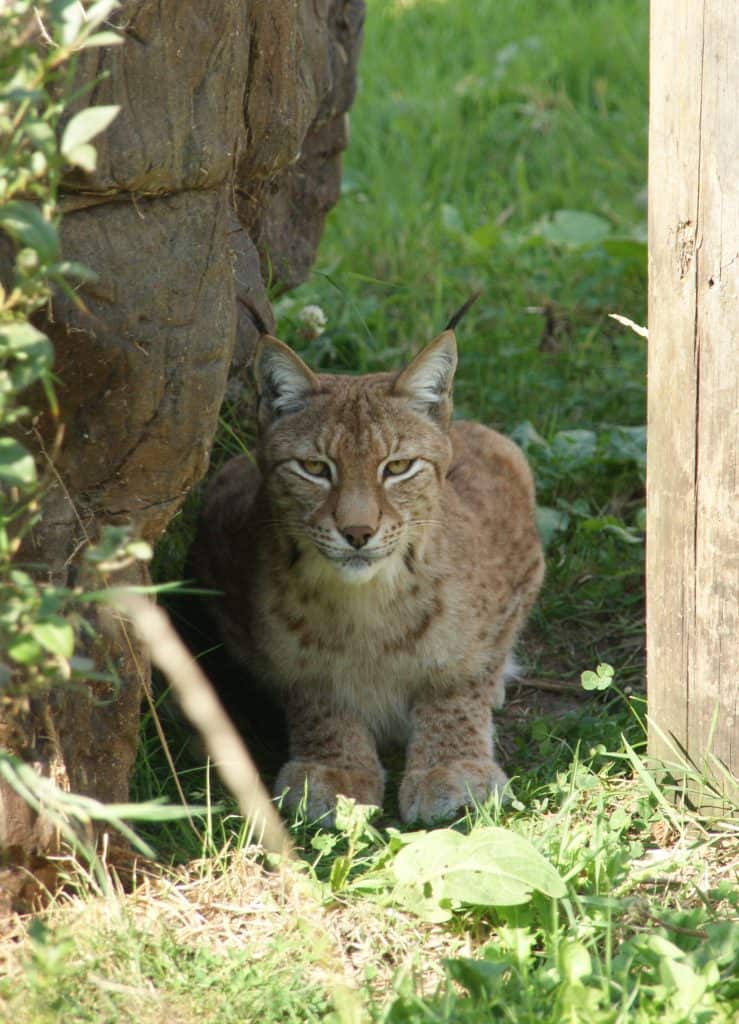Roots was born at the Highland Wildlife Park on 29th May 2012 making him 9 years old now.

He came to us at the end of 2017. So, he has called our park home for over 3 and a half years and I for one could not imagine Wingham without him. You will find roots up at little Himalayas in his own little bachelor pad with a large waterfall that he likes to sit on top of. However, he enjoys hiding and stalking his keepers and members of the public so if you cant see him, he can see you. See if you can spot him next time you’re here.
Today I wanted to tell you a little about lynx in general to mark his birthday.
There are four subspecies in the genus lynx. All the lynx share similarities in their appearance., they have a small head with a ruff, dark tufts on their ears and a short, dark tipped tail.
Eurasian Lynx
Roots is a Eurasian lynx (Lynx lynx). They are found in Europe, central and east Asia and Siberia. Suitable prey may come in the form of Roe deer and hares. For a detailed description of this subspecies look at my previous blog, Britain’s lost carnivores.

Iberian Lynx
The Iberian lynx (Lynx pardinus) is the most endangered wild cat in the world. It is said to only have around 400 individuals remaining. This subspecies is found in the Spanish section of the Iberian peninsula where they hunt almost exclusively rabbits. They are only half the size of the Eurasian lynx with the males bigger by almost a third. The Iberian has the most pronounced ruff of all the lynxes.
Their preferred habitat consists of oak forests with plenty of thick undergrowth. However, they also require some open land where they can find rabbits. Their activity level changes with the seasons, being nocturnal (night) / crepuscular (dawn and dusk) during summer and becoming diurnal (day) in winter.
Canadian Lynx & Bobcat
The Canadian lynx (Lynx canadensis) and bobcat (Lynx rufus) which are both found in north America and are around the same size which is smaller than the Iberian and Eurasian.
The Canadian lynx is found mostly in Canada and Alaska while the bobcat ranges from southern Canada, northern Mexico and the united states.
In overall appearance these two look very similar, so what is the difference? The difference lies in their feet. The bobcat has smaller feet and don’t have furry soles like the others which shows they are less adapted to the snow. Other than that, their habitat can be quite varied from deserts to swamps.
The Canadian lynx’s preferred prey is the snowshoe hare. It relies on it so much that when the hare population goes up and down, so does theirs. The bobcat however, has a slightly more varied diet which includes rabbits but also mice, birds and squirrels. They can also hunt prey a bit larger than themselves.
All subspecies are primarily solitary but occasionally a group may hunt together. They like crevices in rocks and trees to make dens especially when they have cubs. Their litters usually consist of 2-3 young. Their captive lifespan is 15 years on average but they have been known to live up to 20.
So next time you head up to little Himalayas please spend a little bit more time looking for our gorgeous boy Roots.



